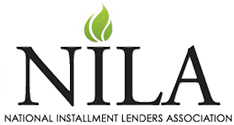Under the Truth-in-Lending Act (TILA), the purpose of the Annual Percentage Rate (APR) is to provide borrowers and regulators with a common comparator across all loan products. In 1968, when the TILA was first passed, Congress acknowledged that APR alone was only useful for comparing loans of similar type, size and term, and that finance charge in actual dollars must also be disclosed alongside APR if borrowers are to understand the true cost of a loan. Increasingly among regulators, however, APR but has been viewed as a trigger for price caps. As we have said elsewhere, at NILA, we believe it is unsuited to this.
As lenders specializing in shorter term loans, we have a perspective on the misunderstandings that arise when APR alone is used to assess the cost of a loan. This is because with small, short-term loans, APR can be calculated in a way that masks the true cost of credit and can even seem shocking to many who are used to 5 percent APR for 30 year mortgages. It is this ‘shock-factor’ of high APR rates that has led to the vogue for “regulation by APR” and given rise to the bill we see in Washington DC today
This is problematic, because a simple examination of the true costs of smaller loans borrowed over short periods , will demonstrate their inherent affordability (and the misleading nature of APR), especially if the loan is an installment loan, in which the borrower’s ability-to-repay is assessed during the underwriting process.
In fact, most small, short-term loans will demonstrate low costs in terms of total dollars and in finance charges as a percentage of principal, but have a higher APR.
There are many other problems with Congress’ current effort to regulate small-dollar loans, but the use of APR for price cap purposes is especially misguided. In Japan, artificially imposed APR caps have, in effect, wiped out much of the formal consumer-lending industry. As demand for credit is unaffected, borrowers are forced to look elsewhere – to less well-regulated, more costly, longer-term and significantly more unsafe lenders. In such an environment, loan sharks and other illegal credit options thrive. This must be guarded against very carefully here in the USA.
SOURCE: NILA








